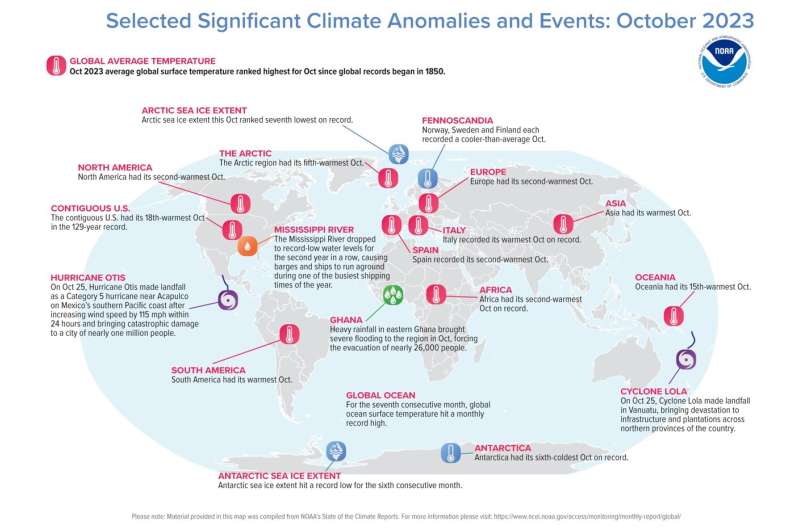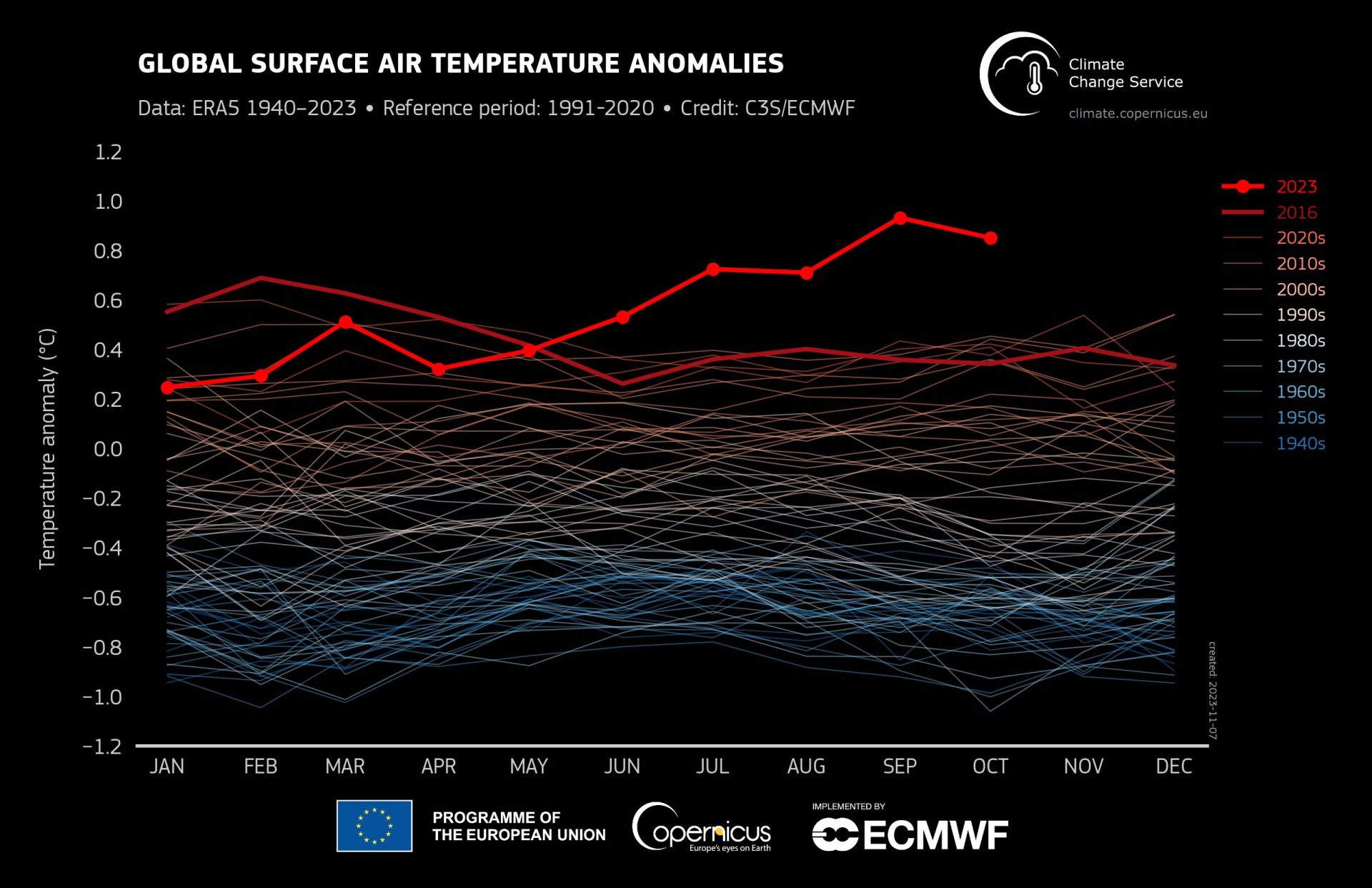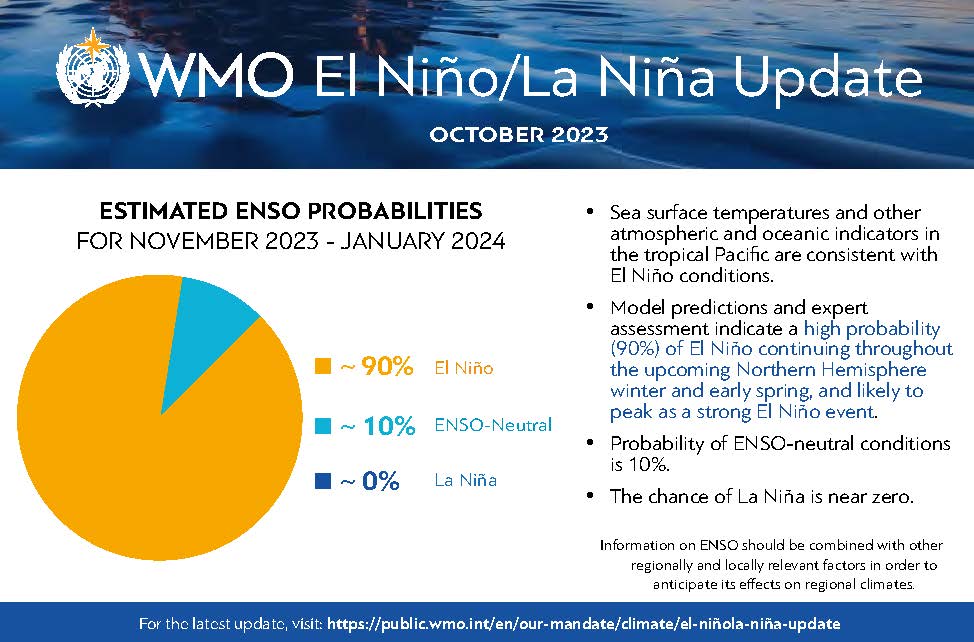
The planet just had its hottest October on record and is on track to become the hottest year in the 174 years that NOAA has been keeping records. According to NCEI’s Global Annual Temperature Outlook, there is a greater than 99% chance that 2023 will be the Earth’s warmest year on record. This was also confirmed by its European counterpart Copernicus Climate Change Service whose Deputy Director Samatha Burgess stated:
“October 2023 has seen exceptional temperature anomalies, following on from four months of global temperature records being obliterated. We can say with near certainty that 2023 will be the warmest year on record, and is currently 1.43°C above the preindustrial average.”
According to measurements taken around the globe by NOAA, the planet’s average temperature for October was 2.41°F (1.34°C) above the 20th-century average of 57.1°F (14.0°C), making it Earth’s hottest October on record. October was also the fifth consecutive record-breaking month in terms of average global temperatures and the seventh consecutive record-breaking month in terms of average global ocean surface temperature according to NOAA’s National Centers for Environmental Information.
Breaking the measurements into the continents, Asia and South America had the hottest October on record, while Africa, Europe and North America had the second hottest October in 174 years. It also marks the 47th-consecutive October and the 536th-consecutive month with average global temperatures above the 20th-century average. The past 10 Octobers from 2014 to 2023 have all been the warmest Octobers in NOAA’s global climate record.

Copernicus found the average global mean temperature between January and October 2023 was the highest on record. It beat the 10-month average for 2016 – the current record holder for the hottest year – by 0.1C. According to Copernicus, which has data going back to 1940, the average surface air temperature reached 15.30°C, 0.85°C above the 1991-2020 average for October. This marks the second highest global temperature anomaly across all months in their 63-year-dataset, after September 2023 (with an anomaly of 0.93°C). October 2023 was 1.7°C above the average for 1850-1900, designated as the pre-industrial reference period. Measurements from Copernicus show that the period from January to October 2023 was 0.1°C warmer than the ten-month average for 2016, currently the warmest calendar year on record, and 1.43°C warmer than the pre-industrial reference period. 2016 saw a particularly strong El Niño pattern.
On November 8, 2023, the World Meteorological Organization (‘WMO’) announced that they expect the current El Niño pattern to last until at least April 2024. El Niño typically impacts global temperature in the year after its development, which in this case will be in 2024. The WMO also confirms that the year 2023 is now on track to be the warmest year on record and that next year may be even warmer. “This is clearly and unequivocally due to the contribution of the increasing concentrations of heat-trapping greenhouse gases from human activities,” said WMO Secretary-General Prof. Petteri Taalas.
